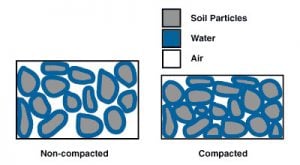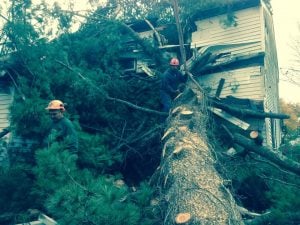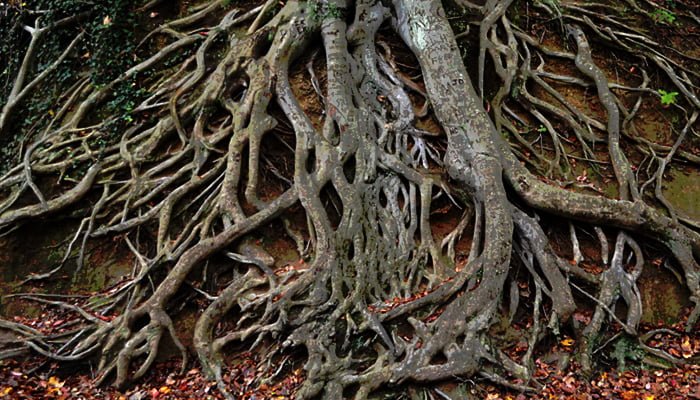Did you know that one of the major causes of tree failure is a failing root system? The main function of roots is to supply a tree with the nutrients and water it needs to survive. So, when its root system is compromised, it makes sense that the tree’s health would suffer. Often homeowners will look at their tree’s branches or its canopy to determine if it looks to be healthy and thriving. However, many problems and warning signs lie below the surface, and are often unseen.
Some signs of root system damages or failure may eventually become evident to an untrained eye, but will often be best diagnosed by a professional arborist. But, here are some signs to look out for:

- Decline in the tree’s canopy (usually starting at the top)
- Leaning
- Soil heaving around its base
- Dead or broken roots
- Fungal fruiting at its base
- Premature leaf drop
- Yellowing of leaves or needles
These signs of root damage may not appear in all parts of your tree. Damages directly correlate to the makeup of a tree. In some cases, the roots are tied directly to the vascular system on one side of the tree. If this is the case, signs of stress will be more evident on this side. In other cases, roots tie directly to the canopy and the canopy will show the most stress.
The loss or impairment of root functionality interferes directly with the tree’s ability to obtain the water and nutrients it needs to survive. The effect root damage will have on a tree varies per tree, and some can survive with more extensive root damage than others. The size of a tree and its original state of health play a large role in determining how much root loss it can take. If the tree is extremely large, it can better deal with a greater amount of root loss than a smaller tree can.
Some causes of root damage include:
- Construction areas
- Soil compaction
- Root-eating pests
- Lawn maintenance
 Once a tree’s root system is compromised, it may either die quickly or linger for years in an unhealthy state. However, depending on the damage, your tree may be rescuable. The first step in curing your tree’s root system is pruning away part of the canopy. By doing this, you are allowing for the tree to survive with less water. Making sure to water your tree is key to help easily supply water without making the tree work for it. Fertilizer is another helpful step in curing your tree, as it helps to stimulate new growth in the root area and the canopy.
Once a tree’s root system is compromised, it may either die quickly or linger for years in an unhealthy state. However, depending on the damage, your tree may be rescuable. The first step in curing your tree’s root system is pruning away part of the canopy. By doing this, you are allowing for the tree to survive with less water. Making sure to water your tree is key to help easily supply water without making the tree work for it. Fertilizer is another helpful step in curing your tree, as it helps to stimulate new growth in the root area and the canopy.
Typically, up to 40% of a root system can be damaged before a tree’s structure is seriously compromised. In some cases, a root system can be completely deteriorating and not display much visible damages. If your tree’s structure is severely compromised, tree removal will likely be your best option, as it is now a fall hazard. Since some serious damages and hazards are unrecognizable to an untrained homeowner, it is important to regularly have your trees and yard inspected by a professional arborist.
Proactively monitoring your trees can help to accurately diagnose problems early, allowing for a higher chance of recovery. If a tree cannot be saved, inspections can help to avoid an unexpected damaging hazard to your home, family, and property. We can not only work to remedy any problems we may find, but also help to avoid unnecessary, and potentially costly, accidents. Contact Red Cedar today for your free consultation!


